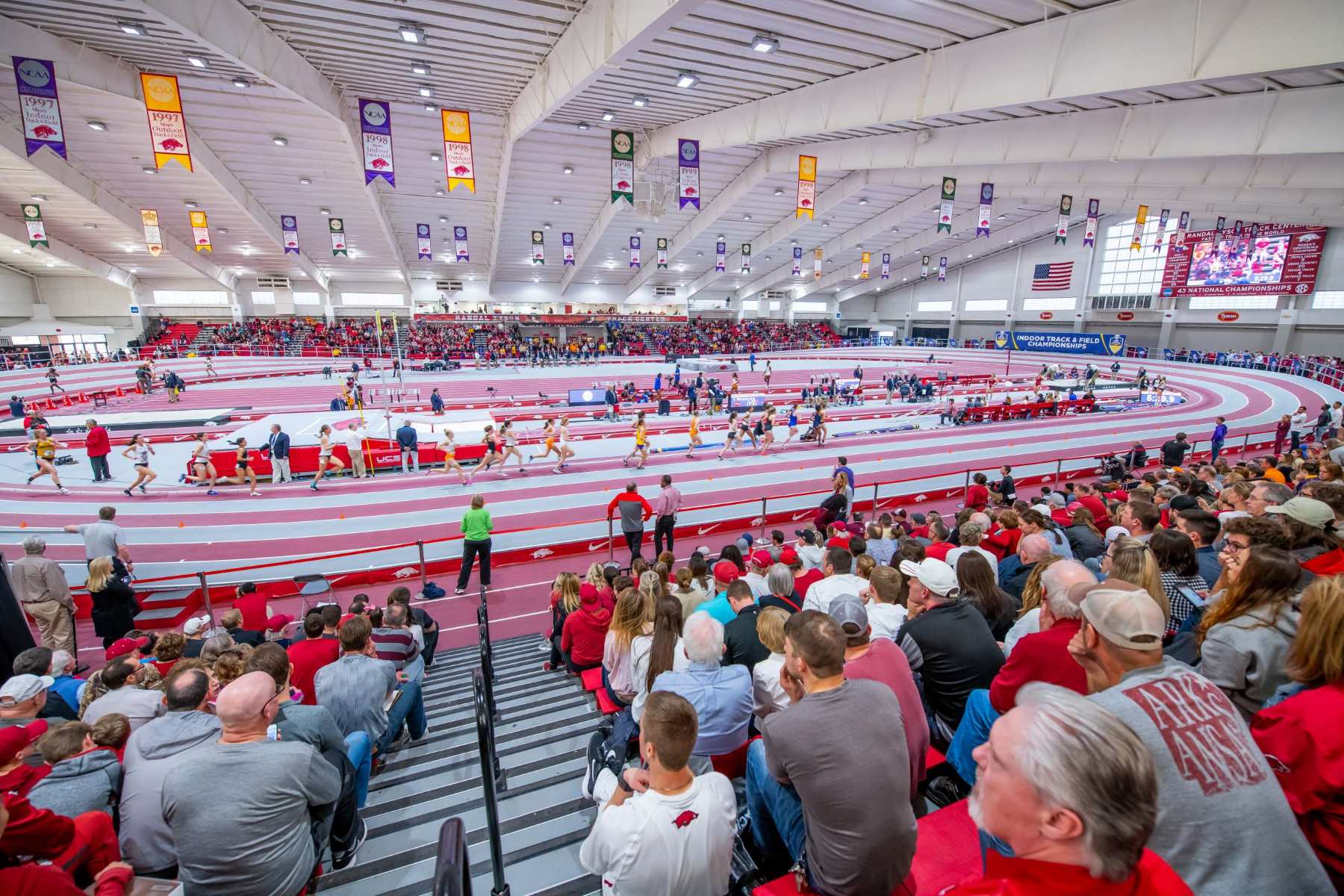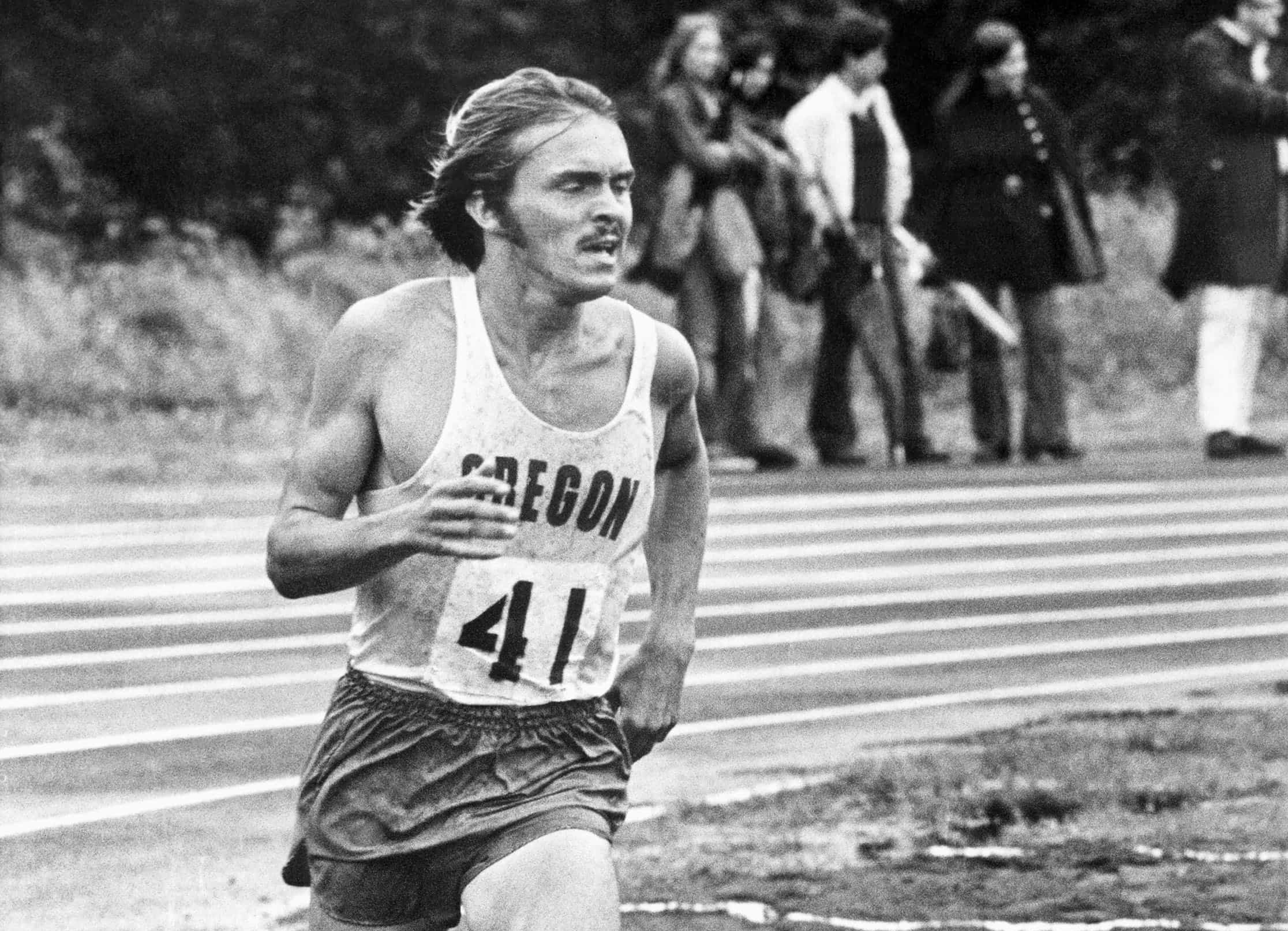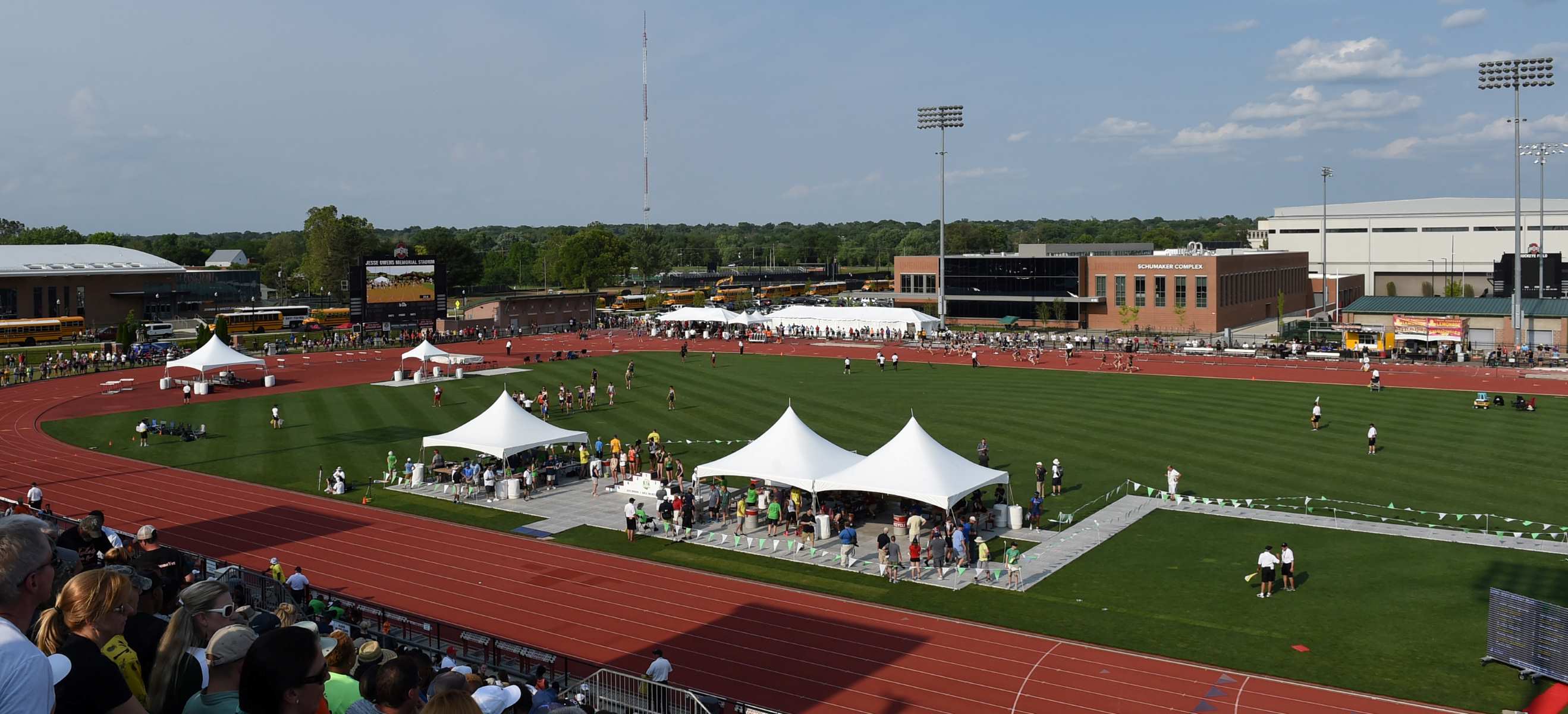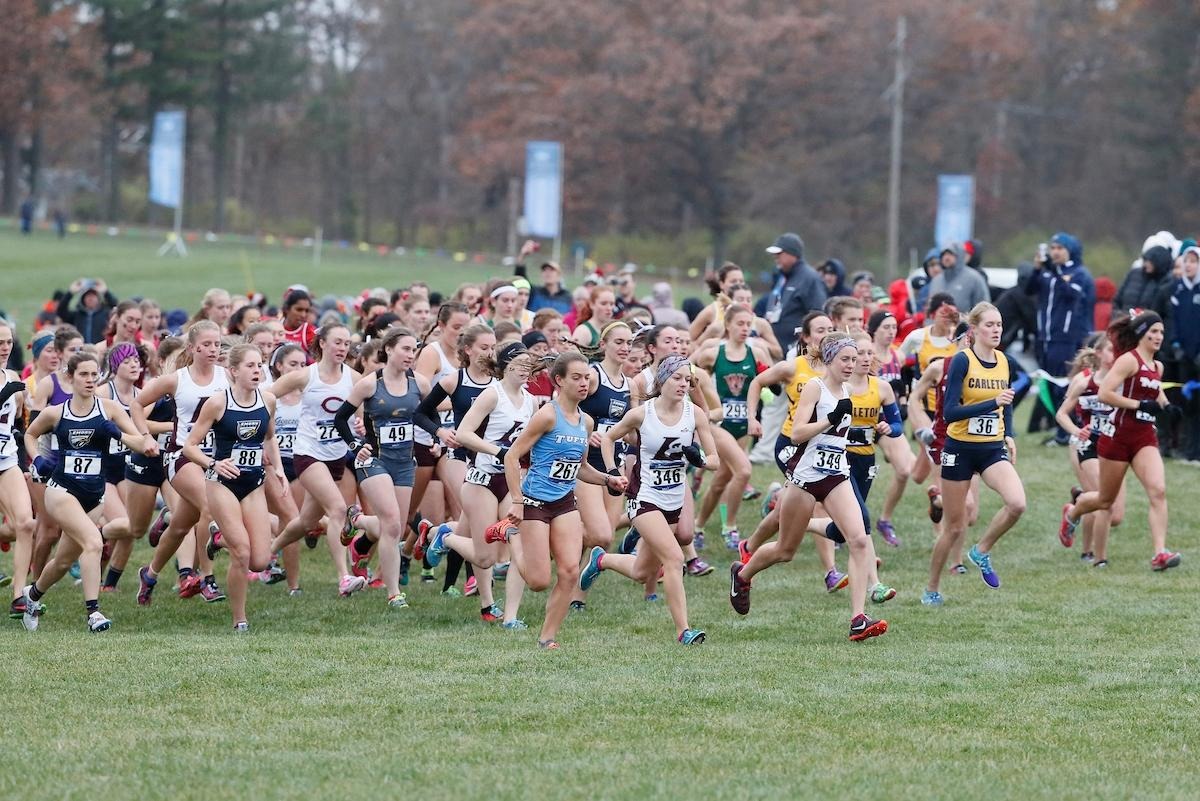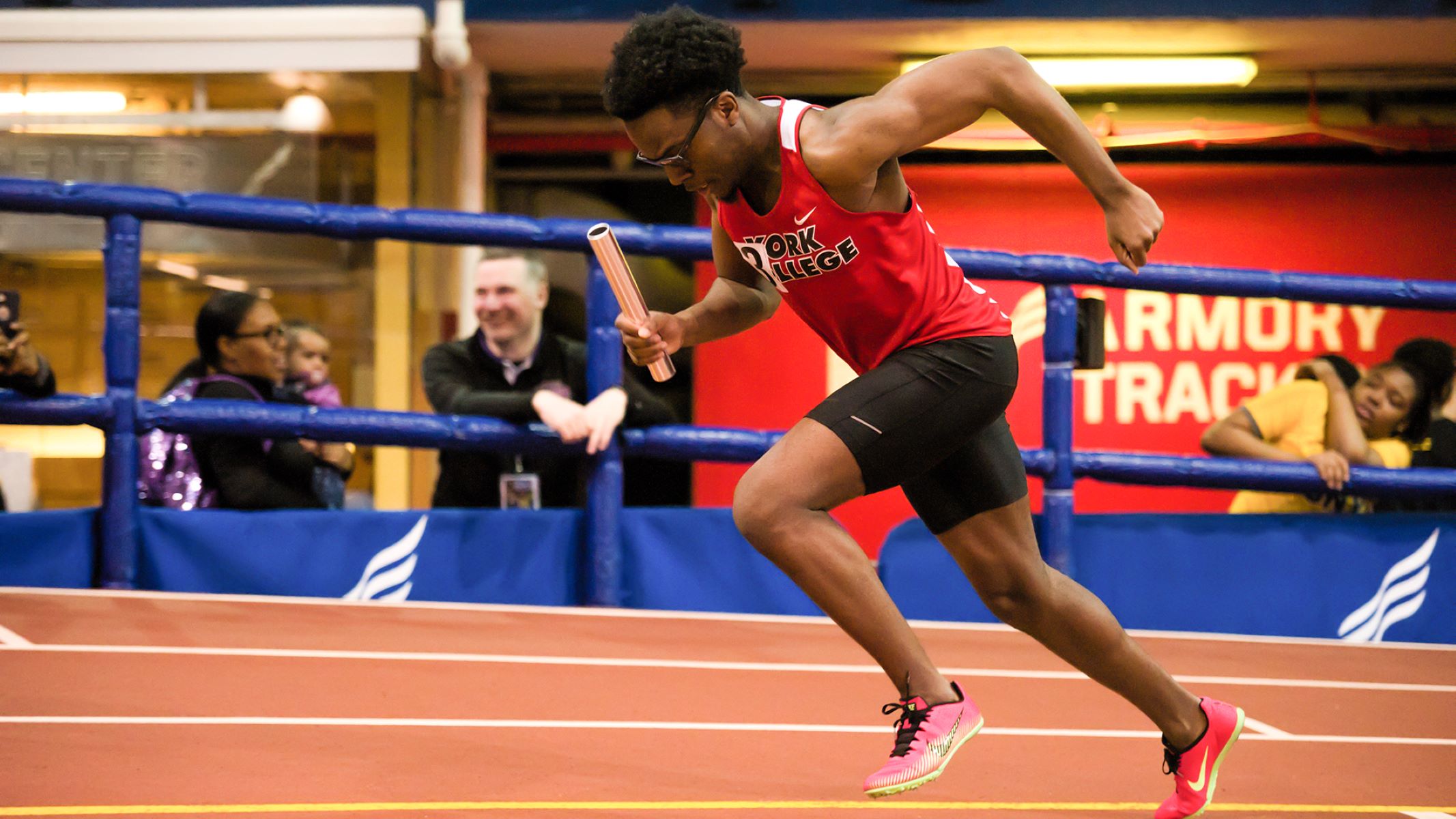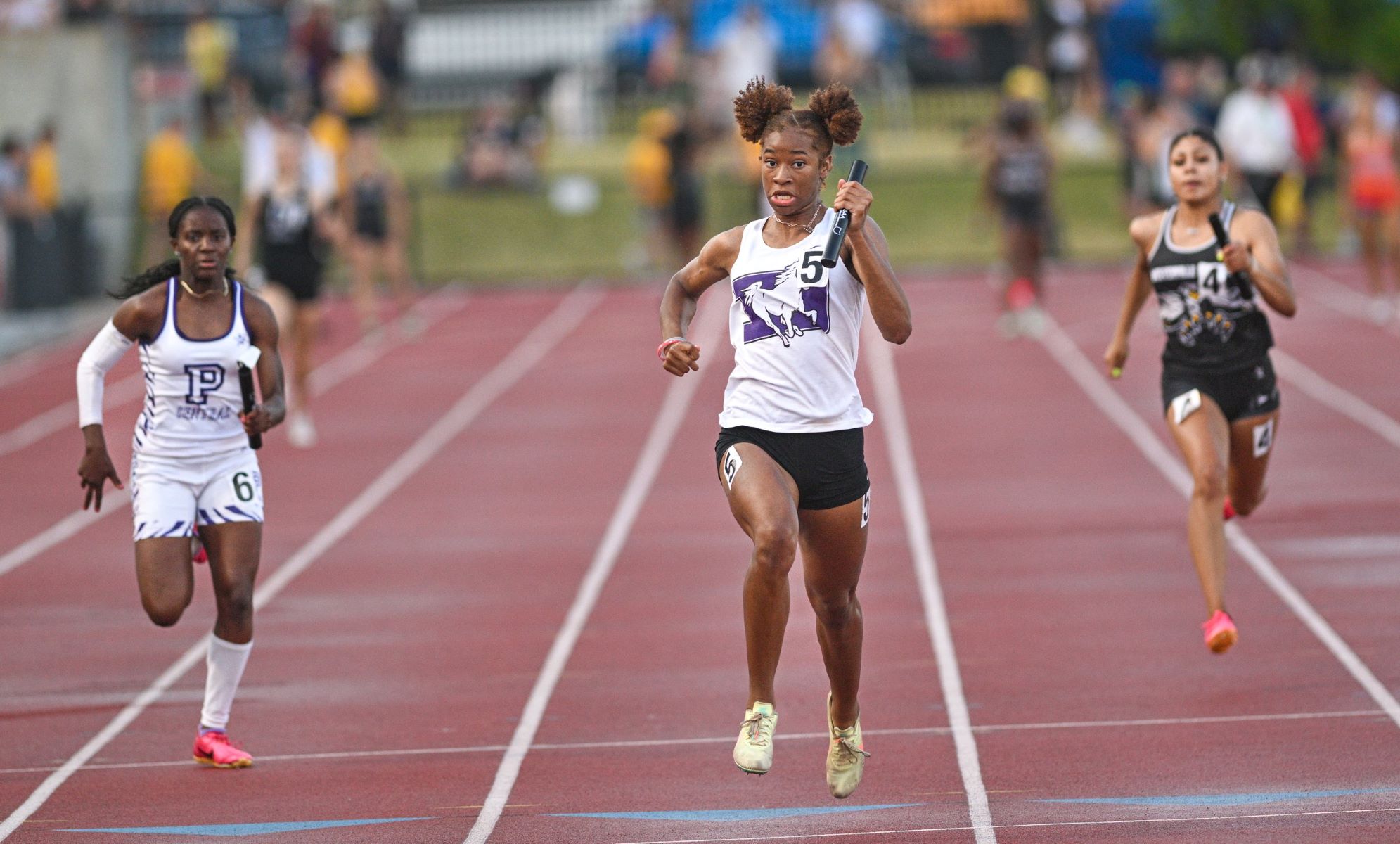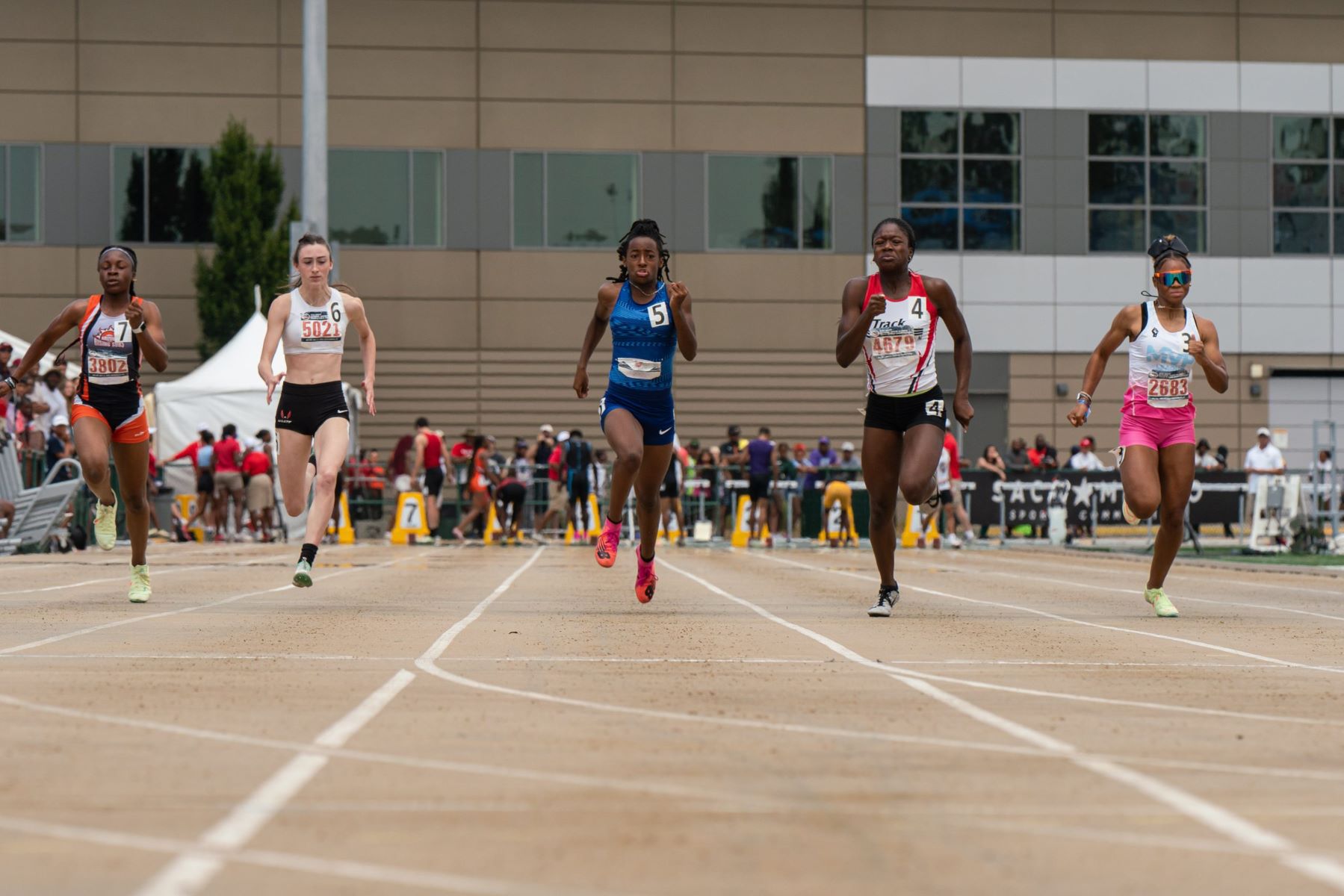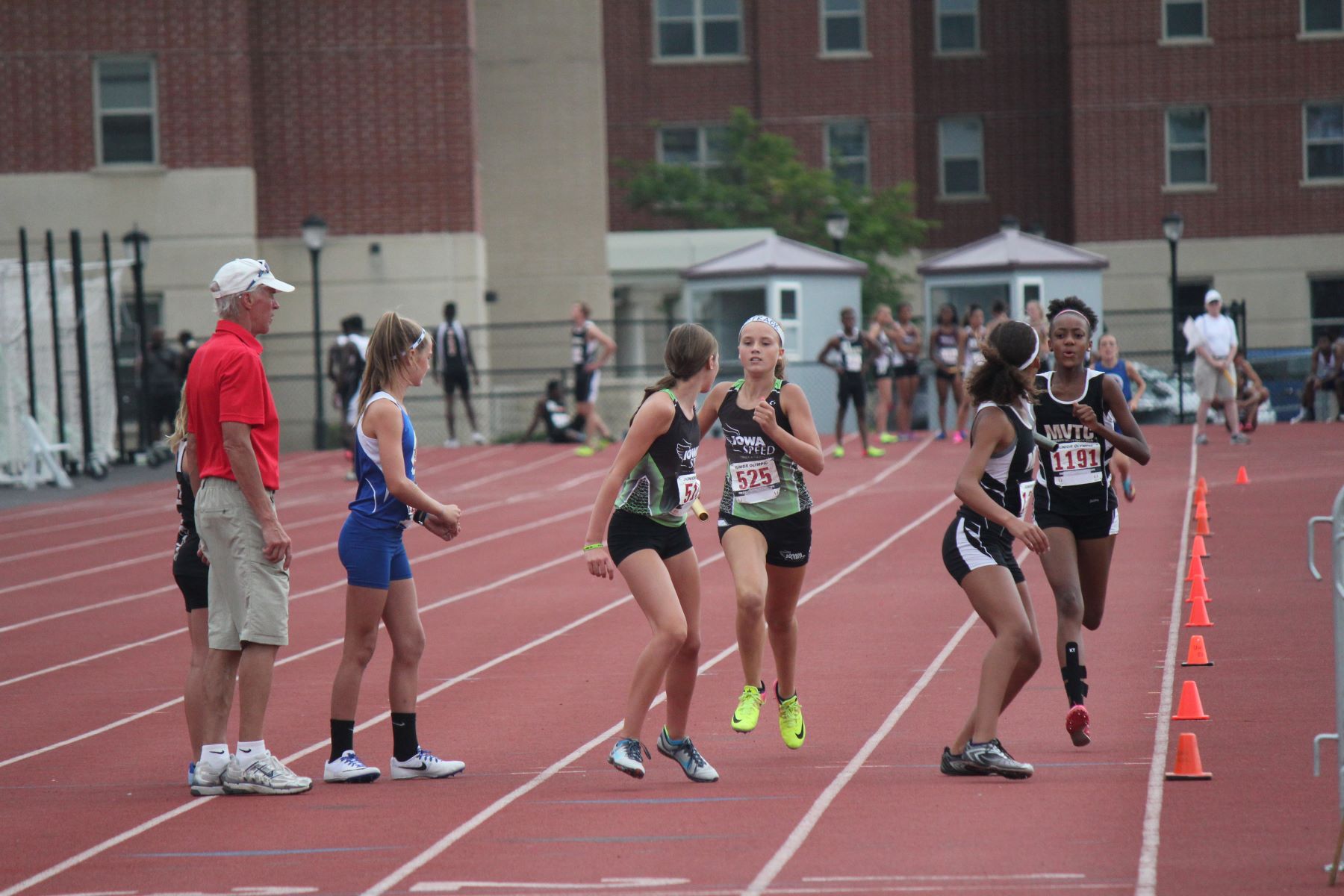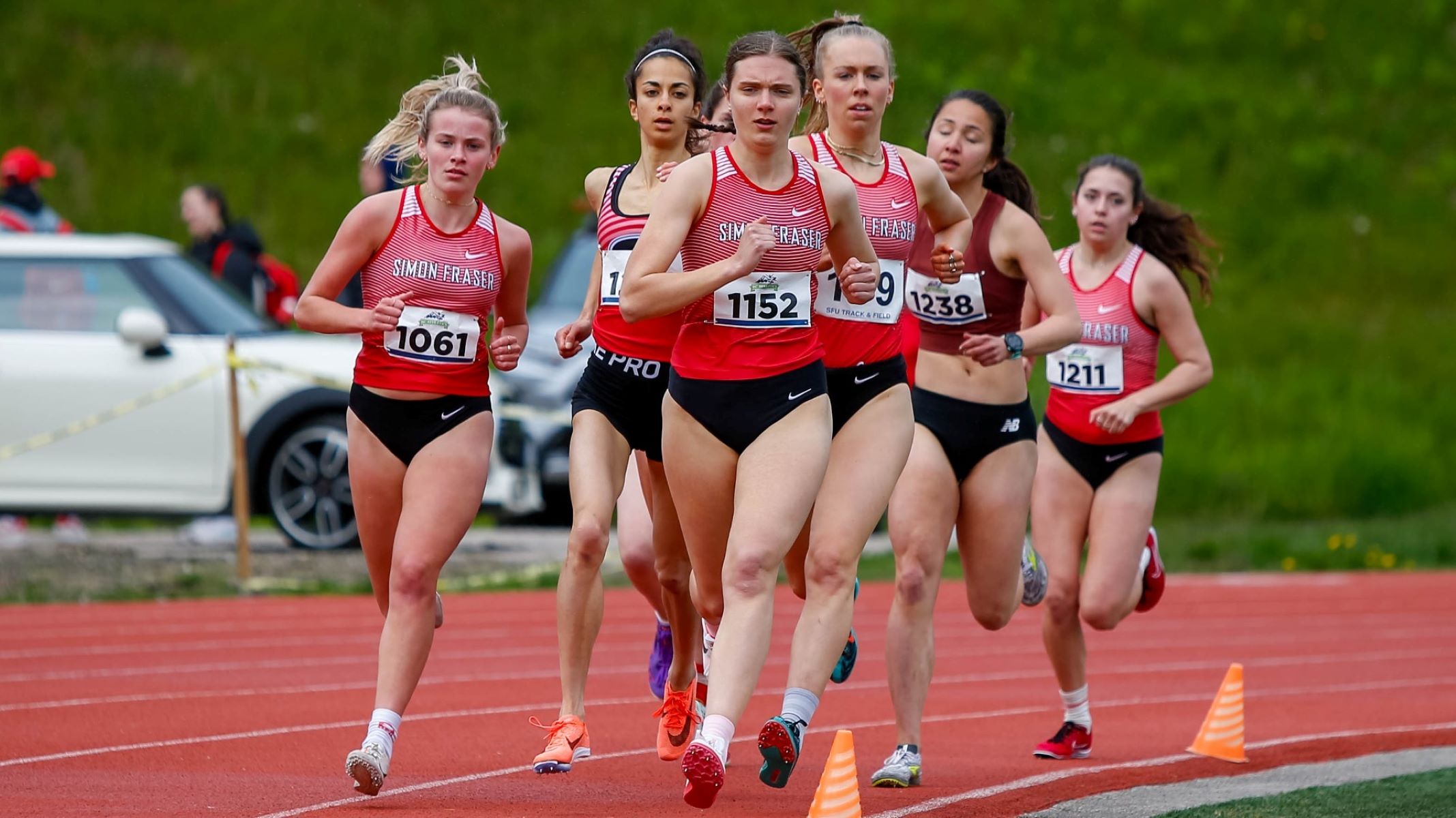

Featured
How To Be A College Running Coach
Modified: March 1, 2024
Become a featured college running coach with our step-by-step guide and transform student-athletes into champions with our proven training techniques.
Introduction
Being a college running coach is a challenging and rewarding profession that requires a unique set of skills and knowledge. As a coach, you play a crucial role in guiding and inspiring young athletes to reach their full potential while also fostering their personal growth and development.
In this article, we will explore the qualifications and requirements for becoming a college running coach, as well as delve into the various aspects of the coaching role. From creating effective training plans to managing competitions, and from supporting the well-being of student-athletes to balancing coaching and administrative responsibilities, we will cover it all.
As a college running coach, you will be responsible for developing a strong coaching philosophy, recruiting and nurturing talented athletes, implementing training programs, and ensuring the overall success of your team. Additionally, you will need to possess excellent communication skills, leadership abilities, and the capability to handle various administrative tasks.
Whether you are considering a career as a college running coach or are already in this field and looking to enhance your coaching skills, this article aims to provide you with valuable insights and guidance. So, let’s delve into the world of college running coaching and discover how to excel in this exciting role.
Qualifications and Requirements
To become a college running coach, there are certain qualifications and requirements that you need to fulfill. While the specific criteria may vary depending on the institution and level of competition, here are some common qualifications and requirements:
- Educational Background: Most colleges and universities require coaches to have at least a bachelor’s degree, preferably in a related field such as kinesiology, sports science, or exercise physiology. Some institutions may even prefer candidates with a master’s degree.
- Certifications: Obtaining coaching certifications can greatly enhance your credibility and marketability. The most recognized certification for running coaches is offered by USA Track and Field (USATF). Additionally, acquiring certifications in first aid, CPR, and sports nutrition can also be beneficial.
- Coaching Experience: While not always a mandatory requirement, having coaching experience is highly advantageous. It showcases your understanding of the coaching process, your ability to work with athletes, and your practical knowledge of training techniques and strategies.
- Athletic Experience: Having a background in competitive running or athletics can provide you with valuable insights into the sport. This firsthand experience can help you better understand the needs and challenges faced by your athletes and allow you to relate to them on a deeper level.
- Strong Communication Skills: Effective communication is essential in the coaching profession. You must be able to clearly convey instructions and expectations to your athletes, provide constructive feedback, and communicate with other coaching staff and administrators.
- Leadership Abilities: As a college running coach, you will be responsible for leading and guiding a team of athletes. You must possess strong leadership skills to motivate and inspire your athletes to perform at their best, both individually and as a team.
- Organizational and Administrative Skills: Coaches are often required to handle administrative tasks such as scheduling, arranging travel, managing budgets, and ensuring compliance with governing body regulations. Excellent organizational and administrative skills are crucial to effectively manage these responsibilities.
While meeting these qualifications and requirements is important, it is also essential to have a genuine passion for coaching and a deep understanding of the sport. Running coaching involves more than just technical knowledge; it involves mentorship, guidance, and the ability to create a positive and supportive team environment.
Now that we have discussed the qualifications and requirements, let’s delve into the various aspects of being a college running coach.
Understanding the Role of a College Running Coach
The role of a college running coach extends far beyond simply instructing athletes on how to run faster or improve their physical performance. A coach serves as a mentor, motivator, and educator, guiding athletes not only in their athletic pursuits but also in their personal growth and development.
A college running coach is responsible for creating a positive and supportive team culture, fostering camaraderie among athletes, and promoting discipline, resilience, and sportsmanship. They must possess a deep understanding of the sport and be able to tailor training programs to meet the needs and goals of each individual athlete.
Additionally, a college running coach needs to be knowledgeable about injury prevention, sports nutrition, and strength and conditioning. This ensures that their athletes are not only physically prepared but also properly cared for to minimize the risk of injuries and optimize performance.
Furthermore, a coach plays a critical role in recruiting and developing talented runners. They must have the ability to identify athletes with potential and effectively communicate the benefits of joining their program. Once athletes are a part of the team, the coach must provide ongoing guidance, support, and mentorship to help them reach their full potential.
It is also important for a college running coach to have strong communication and leadership skills. They must be able to effectively communicate with athletes, coaching staff, and other stakeholders, such as parents or athletic administrators. Good leadership skills are essential in establishing a clear direction for the team, setting expectations, and motivating athletes to perform their best.
A coach’s role also extends to managing competitions and creating race strategies. They must analyze opponents and track performances to develop effective race plans that play to the strengths of their athletes. During competitions, a coach provides guidance and support, helping athletes make critical decisions and adjustments on the field.
Overall, the role of a college running coach is multi-faceted and requires a diverse skill set. It involves being a teacher, motivator, mentor, and strategist all at once. A successful coach not only helps their athletes achieve athletic success but also instills valuable life skills that will benefit them beyond their running careers.
Now that we have a better understanding of the role of a college running coach, let’s explore how to develop a strong coaching philosophy.
Building a Strong Coaching Philosophy
A coaching philosophy serves as the foundation for a coach’s approach to training, developing athletes, and guiding the team. It reflects their core beliefs, values, and principles, and shapes their coaching decisions and strategies. For a college running coach, building a strong coaching philosophy is essential to provide direction and purpose for their athletes.
To develop a coaching philosophy, it is crucial to reflect on your own coaching experiences, personal values, and the unique characteristics of the athletes you work with. Here are some steps to help you build a strong coaching philosophy:
- Define Your Core Values: Identify the fundamental values that guide your coaching approach. These values could include integrity, hard work, teamwork, discipline, and respect. Clearly articulating these values will help you make coaching decisions that align with your beliefs.
- Focus on Athlete Development: Place the growth and development of your athletes at the forefront of your philosophy. Strive to create an environment that promotes both personal and athletic development, fostering resilience, self-confidence, and a growth mindset.
- Embrace Individuality: Recognize that each athlete is unique and has different strengths, weaknesses, and goals. Tailor training programs and coaching strategies to meet the individual needs of your athletes, allowing them to thrive and reach their full potential.
- Promote Sportsmanship and Character: Foster a culture of sportsmanship, fair play, and respect for opponents. Instill in your athletes the importance of displaying good character both on and off the field, as their actions reflect the values of the team and the institution.
- Encourage Accountability and Responsibility: Teach your athletes the importance of taking ownership of their performance and actions. Promote a sense of responsibility, not only to themselves but also to their team, coaches, and the wider running community.
- Continued Learning and Adaptation: Recognize that coaching is a continual learning process. Stay updated with the latest research, advancements, and trends in coaching and sport science. Be open to adapting your coaching methods based on new information and insights.
Remember, a coaching philosophy is a guide that evolves and grows as you gain experience and learn from your athletes and colleagues. It should be flexible enough to adapt to individual and team needs while remaining true to your core values.
Having a strong coaching philosophy not only provides guidance for your coaching decisions but also helps athletes understand the principles and expectations you hold. It fosters a sense of trust and unity within the team and provides a solid foundation for athlete development and success.
Now that we have discussed the importance of a coaching philosophy, let’s explore the aspects of recruiting and athlete development.
Recruiting and Athlete Development
Recruiting talented athletes and fostering their development is a crucial aspect of being a college running coach. Effective recruiting strategies and a comprehensive athlete development program can contribute to building a successful and competitive team. Let’s explore these aspects further:
1. Identifying and Attracting Talent: To build a strong team, a coach must have an eye for talent and be proactive in recruiting athletes who align with their program’s philosophy and goals. Attend high school track meets and cross-country races to identify potential recruits, and establish relationships with high school coaches to gain inside knowledge about promising athletes.
2. Effective Communication: Communication plays a vital role in the recruiting process. Engaging with potential recruits and their families to provide information about your program, the academic opportunities, and the facilities available can help attract high-quality athletes. Regularly communicate with recruits through emails, phone calls, and official visits to build a relationship and answer any questions they may have.
3. Individualized Athlete Development Plans: Once athletes join your program, it is essential to create individualized development plans tailored to their specific needs and goals. Assess their strengths, weaknesses, and potential areas for improvement through performance evaluations and discussions. Adapt training programs and provide personalized guidance to help them reach their full athletic potential.
4. Technical Coaching and Skill Development: As a coach, it is crucial to provide proper technical coaching and skill development to enhance athletes’ performance. Working on running mechanics, pacing strategies, start techniques, and other race-specific skills will enable athletes to perform at their best during competitions.
5. Building Physical and Mental Strength: Focus on developing athletes’ physical and mental strength to improve their overall performance. Incorporate strength and conditioning exercises, flexibility training, and mental skills training to enhance their endurance, speed, agility, and mental resilience.
6. Nutritional Guidance: Educate athletes about proper nutrition and hydration to optimize their performance and recovery. Provide guidance on pre- and post-workout meals, race-day nutrition strategies, and the importance of hydration for optimal athletic performance.
7. Monitoring and Progress Evaluation: Regularly monitor athletes’ progress through performance testing, timed trials, and race results. Assess their development and make necessary adjustments to training plans to ensure continual improvement. Provide regular feedback and celebrate their achievements to boost morale and motivation.
8. Leadership and Personal Development: Foster leadership and personal development among your athletes. Encourage them to take on leadership roles within the team, participate in community service, and promote personal growth through goal-setting, time management, and resilience-building activities.
By investing time and effort into recruiting talented athletes and guiding their development, you contribute to the success and growth of your team. Remember, athlete development goes beyond the physical aspect; it includes nurturing their personal skills, character development, and fostering a positive team culture.
Now let’s explore how to create effective training plans for your athletes.
Creating Effective Training Plans
Designing effective training plans is a fundamental aspect of being a college running coach. Training plans provide the structure and guidance necessary for athletes to improve their performance, develop their skills, and achieve their goals. Here are key considerations when creating training plans:
1. Assessing Individual Needs: Before designing a training plan, assess each athlete’s current fitness level, strengths, weaknesses, and goals. Consider factors such as their experience, injury history, and upcoming competitions. This assessment will help tailor the training plan to meet their specific needs.
2. Setting Clear Objectives: Establish clear and measurable objectives for each phase of the training plan. This allows athletes to track progress and stay motivated. Objectives may include improving speed, endurance, strength, or race-specific skills.
3. Balancing Volume and Intensity: Find the right balance between training volume (distance and duration) and intensity (pace and effort). Gradually increase training load to avoid overtraining and minimize the risk of injury, while also incorporating challenging workouts to stimulate improvement.
4. Periodization: Utilize periodization principles to structure training plans. Divide the year into distinct phases, such as the base, build, peak, and recovery phases. Each phase has a specific focus and intensity level to ensure gradual improvement and optimal performance during key competitions.
5. Varied Workouts: Incorporate a variety of training sessions to develop different physiological systems and improve overall performance. Include long runs for endurance, interval training for speed and anaerobic capacity, tempo runs for lactate threshold, and recovery runs for active recovery.
6. Rest and Recovery: Include rest days and recovery periods within the training plan to allow for adaptation and regeneration. Recovery sessions, such as easy runs, stretching sessions, or cross-training activities, promote injury prevention and maintain athletes’ overall well-being.
7. Monitoring and Adjustments: Regularly monitor athletes’ performance and make necessary adjustments to the training plan based on their progress and feedback. Adapt the plan to address weaknesses, capitalize on strengths, and ensure continual improvement.
8. Communication and Collaboration: Engage in open and regular communication with athletes to gauge their physical and mental well-being. Involve them in the training plan’s decision-making process, encouraging their input and feedback. Collaboration fosters a sense of ownership and helps build trust between the coach and athletes.
9. Long-Term Development: Consider the long-term development of athletes when creating training plans. Gradually increase training load and intensity over time to prevent burnout and promote sustainable progress. Focus on developing a solid foundation of aerobic capacity, running mechanics, and strength before intensifying training.
Remember, training plans should be flexible and adaptable. Adjustments may be necessary based on unforeseen circumstances, such as injuries, weather conditions, or changes in competition schedules. Continuously evaluate and fine-tune training programs to maximize athletes’ potential while considering their individual needs and goals.
Now that we have explored how to create effective training plans, let’s discuss the importance of implementing strength and conditioning programs.
Implementing Strength and Conditioning Programs
Strength and conditioning programs play a vital role in the overall athletic development and performance of college runners. These programs focus on improving muscular strength, power, endurance, and mobility to enhance running economy and prevent injuries. Here are key considerations when implementing strength and conditioning programs:
1. Comprehensive Needs Assessment: Conduct a thorough assessment of the athletes’ strength, mobility, and muscular imbalances. Identify areas that require improvement and design targeted exercises to address these specific needs.
2. Functional Training: Incorporate exercises that mimic the movement patterns and demands of running. Functional exercises, such as squats, lunges, deadlifts, and core stability exercises, build strength and stability in key running muscles.
3. Progressive Overload: Gradually increase the training load and intensity to promote adaptations and continuous improvement. Progression should be individualized and based on each athlete’s fitness level, experience, and injury history.
4. Plyometrics and Power Development: Include plyometric exercises, such as jumps, bounds, and hops, to enhance explosiveness and power. These exercises improve running efficiency, speed, and the ability to generate force.
5. Speed and Agility Training: Incorporate speed drills, agility exercises, and ladder drills to enhance athletes’ speed, quickness, and agility. These training modalities improve running mechanics, coordination, and reaction time.
6. Injury Prevention: Implement exercises and techniques to minimize the risk of common running injuries. Strengthening the muscles surrounding the knees, hips, ankles, and core, along with proper warm-up routines and stretching, can help prevent injuries and improve overall resilience.
7. Flexibility and Mobility: Incorporate regular stretching and mobility exercises to improve flexibility and joint range of motion. Increased flexibility aids in running efficiency and reduces the risk of muscle imbalances and injuries.
8. Recovery and Regeneration: Include recovery strategies within the strength and conditioning program to optimize athletes’ recovery and readiness for training. This may involve foam rolling, stretching, yoga, or other relaxation techniques.
9. Periodization and Synchronization: Align the strength and conditioning program with the overall training plan to ensure proper synchronization. Periodize the strength and conditioning exercises based on the phases of the running training program, prioritizing different aspects of strength and conditioning as the season progresses.
10. Professional Guidance: Consider seeking the guidance of a certified strength and conditioning specialist or collaborating with the institution’s strength and conditioning department. These experts can provide valuable insights and develop customized programs that complement the specific needs of the runners.
Implementing a well-designed strength and conditioning program helps runners develop the necessary physical attributes to thrive in their sport. It enhances running economy, power, muscular endurance, and resilience, thereby maximizing their performance potential while minimizing the risk of injuries.
Now that we have explored the importance of strength and conditioning programs, let’s discuss the crucial topic of injury prevention and rehabilitation.
Injury Prevention and Rehabilitation
Injury prevention and rehabilitation are critical aspects of ensuring the well-being and longevity of college runners. As a coach, it is essential to prioritize the prevention of injuries and have a plan in place for rehabilitation if and when injuries occur. Here are key considerations for injury prevention and rehabilitation:
1. Pre-Season Assessments: Conduct comprehensive pre-season assessments to identify any underlying issues or imbalances that may increase the risk of injuries. Assess factors such as flexibility, strength, running mechanics, and previous injury history.
2. Proper Warm-up and Cool-down: Emphasize the importance of a thorough warm-up routine before training sessions and competitions. Include dynamic stretches, mobility exercises, and activation drills to prepare the body for running. Similarly, encourage a cool-down routine that includes static stretching to aid in recovery and flexibility.
3. Gradual Progression: Avoid sudden increases in training load or intensity, as these can lead to overuse injuries. Gradually progress the volume and intensity of training to allow the body time to adapt and reduce the risk of injury.
4. Correct Training Techniques: Ensure that athletes are using proper form and technique during training. Proper running mechanics, efficient stride length and frequency, and adequate foot strike are important to minimize the risk of injuries.
5. Strength and Conditioning: Include strength and conditioning exercises in the training plan to improve muscular strength, stability, and endurance. Strengthening key muscle groups, such as the hips, glutes, core, and lower legs, can help prevent common running injuries.
6. Cross-Training: Encourage athletes to incorporate cross-training activities, such as swimming, cycling, or elliptical workouts, to reduce the repetitive impact on their bodies. Cross-training provides active recovery and helps maintain fitness levels while reducing the risk of overuse injuries.
7. Proper Footwear and Equipment: Ensure that athletes have appropriate running shoes that fit properly and provide adequate support and cushioning. Assess other equipment, such as insoles or orthotics, to determine if they are necessary to correct individual biomechanical issues.
8. Injury Evaluation and Rehabilitation: If an injury occurs, promptly evaluate its severity and seek appropriate medical attention. Work closely with athletic trainers and healthcare professionals to develop a rehabilitative plan that includes rest, physical therapy, and gradual return to running.
9. Modify Training for Injured Athletes: Provide modified training plans for injured athletes to maintain their fitness and prevent deconditioning. Focus on alternative exercises that do not exacerbate the injury and collaborate with healthcare professionals to ensure a safe and efficient rehabilitation process.
10. Open Communication: Encourage athletes to communicate any discomfort or pain they may be experiencing. Foster an environment where athletes feel comfortable discussing their injuries, as early detection and intervention can prevent minor issues from becoming major problems.
By prioritizing injury prevention and having a structured plan for rehabilitation, coaches can help runners stay healthy, enhance their performance, and prolong their running careers. Remember, the well-being of the athletes should always be a primary focus.
Now that we have explored injury prevention and rehabilitation, let’s shift our focus to the essential skills of communication and leadership that coaches should possess.
Communication and Leadership Skills
Communication and leadership skills are essential for college running coaches to effectively guide and motivate their athletes. Clear and open communication fosters trust and understanding within the team, while effective leadership creates a positive and supportive team environment. Let’s explore the key aspects of communication and leadership skills:
1. Active Listening: Actively listen to your athletes, actively seeking to understand their thoughts, concerns, and feedback. Create a safe and non-judgmental space where athletes feel comfortable expressing themselves and know that their voices are heard.
2. Clear and Transparent Communication: Clearly and transparently communicate expectations, goals, and plans to athletes. Articulate objectives, training schedules, and performance feedback in a concise and understandable manner, ensuring that athletes have a clear understanding of what is expected from them.
3. Constructive Feedback: Provide constructive feedback to help athletes improve their performance. Balance praise and constructive criticism, focusing on specific areas for improvement and offering actionable suggestions for growth. Use positive reinforcement to motivate and encourage athletes.
4. Conflict Resolution: Develop conflict resolution skills to address any conflicts or issues that may arise within the team. Foster an environment where conflicts can be openly discussed and resolved in a respectful manner, ensuring that the team remains cohesive and focused.
5. Individualized Approach: Recognize that each athlete is unique and requires a personalized coaching approach. Adapt your communication style and strategies to effectively connect with and motivate each individual athlete. Be sensitive to their needs, aspirations, and emotional well-being.
6. Empathy and Support: Show genuine empathy and support toward your athletes. Understand the challenges they may face both on and off the field and provide the necessary guidance and encouragement. Be available to listen to their concerns and provide guidance when needed.
7. Team Building: Foster a positive team culture and camaraderie among athletes. Encourage teamwork, collaboration, and mutual support. Create team-building activities and opportunities for athletes to develop strong bonds and trust with each other.
8. Lead by Example: Demonstrate the qualities and behaviors you expect from your athletes. Lead by example and exemplify discipline, commitment, determination, and respect. Show athletes what it means to be a dedicated and responsible team member.
9. Inspiration and Motivation: Inspire and motivate athletes to reach their full potential. Be a source of motivation through your words, actions, and belief in their abilities. Encourage them to set goals, strive for excellence, and stay committed to their development.
10. Collaboration and Teamwork: Collaborate with other coaching staff, athletic trainers, and administrators to create a cohesive team environment. Foster teamwork and effective communication among the coaching staff to ensure a unified approach in developing the athletes.
Effective communication and leadership skills are integral to creating a positive and successful coaching environment. By consistently improving these skills, coaches can foster strong relationships with their athletes, empower them to excel, and create a supportive team culture.
Now that we have explored communication and leadership skills, let’s shift our focus to organizing and managing competitions.
Organizing and Managing Competitions
Organizing and managing competitions is a crucial responsibility of college running coaches. These events provide athletes with valuable opportunities to showcase their abilities, compete against top-level competition, and represent their institution. Here are key considerations for organizing and managing competitions:
1. Scheduling and Planning: Create a competition calendar well in advance, taking into account the availability of facilities, team priorities, and the athletes’ training cycles. Consider factors such as travel logistics and academic schedules to ensure smooth coordination.
2. Team Selection: Determine the criteria and process for selecting athletes to compete in specific events. Consider individual performance, physical readiness, teamwork, and the specific requirements of each competition. Communicate the selection process clearly to athletes and provide feedback on why certain athletes were chosen.
3. Registration and Entry: Facilitate the registration and entry process for competitions. Ensure that all necessary forms, fees, and athlete information are submitted accurately and on time. Keep track of registration deadlines and communicate entry details to athletes and relevant stakeholders.
4. Travel and Accommodation: Coordinate travel arrangements, including transportation and accommodation, for away competitions. Ensure athletes have necessary information about departure times, lodging details, and any additional arrangements, such as meals or team activities, to ensure a smooth and organized travel experience.
5. Course and Venue Preparation: Collaborate with the hosting venue to prepare the course and facilities for the competition. Ensure that course measurements are accurate, the terrain is clear of obstacles, and necessary equipment or resources are available for the competition.
6. Team and Athlete Support: Provide necessary support to athletes during competitions. This may include setting up team areas, providing appropriate nutrition and hydration, and ensuring athletes are mentally prepared and supported throughout the competition.
7. Liaison with Officials and Staff: Communicate with meet directors, officials, and event staff to ensure smooth execution of the competition. This includes timely submission of athlete entries, addressing any logistical concerns, and coordinating with officials to carry out the competition rules and regulations.
8. Performance Tracking: Track and record individual and team performances during competitions. Keep records of race times, rankings, and other relevant data to assess athletes’ progress, identify areas of improvement, and determine team success.
9. Post-Competition Evaluation: Conduct a post-competition evaluation to assess the overall performance of the team. Analyze strengths and weaknesses, gather feedback from athletes and coaching staff, and identify areas for improvement in future competitions.
10. Sportsmanship and Fair Play: Emphasize the importance of sportsmanship and fair play among your athletes. Encourage respectful behavior towards opponents, officials, and fellow teammates. Reinforce the values of integrity, fair competition, and respect for the sport.
Effectively organizing and managing competitions ensures that athletes have the opportunity to compete at their best and represent their institution with pride. It requires meticulous planning, strong communication, and attention to detail. Ultimately, well-executed competitions contribute to the overall success and growth of the team.
Now that we have explored organizing and managing competitions, let’s shift our focus to supporting the well-being of student-athletes.
Supporting the Well-being of Student-Athletes
As a college running coach, it is essential to prioritize the well-being of your student-athletes. Supporting their physical, mental, and emotional well-being not only enhances their athletic performance but also contributes to their overall personal growth and success. Here are key aspects to consider when supporting the well-being of student-athletes:
1. Physical Health: Monitor and promote the physical health of your athletes. Encourage regular medical check-ups, appropriate nutrition, hydration, and sufficient sleep. Collaborate with athletic trainers and healthcare professionals to address any injuries or health concerns promptly.
2. Mental Well-being: Recognize the importance of mental well-being in athletic performance. Promote stress management techniques and resilience-building strategies. Create an open and supportive environment where athletes feel comfortable discussing any mental health challenges they may face.
3. Academic Support: Recognize that student-athletes have academic responsibilities alongside their athletic commitments. Facilitate a balance between academics and athletics by coordinating with academic advisors, offering academic support resources, and promoting time management skills.
4. Personal Development: Encourage personal growth and development by providing mentorship and guidance beyond the running track. Foster life skills such as discipline, teamwork, perseverance, and leadership that will benefit athletes both during and beyond their running careers.
5. Team Culture: Foster a positive and inclusive team culture where athletes feel a sense of belonging and unity. Promote teamwork, respect, and support among teammates. Encourage collaboration and create opportunities for team-building activities and social interactions.
6. Career Guidance: Acknowledge that student-athletes have aspirations beyond their college running careers. Provide career guidance and resources, including networking opportunities, internships, and mentorship, to support their future professional endeavors.
7. Time Management: Assist athletes in managing their time effectively to balance academics, training, and other commitments. Teach them organizational skills, prioritization techniques, and help them create schedules that optimize their time and reduce stress.
8. Support Systems: Foster relationships with athletic trainers, counselors, and other support staff who can provide additional guidance and support to athletes. Collaborate with these professionals to ensure a holistic approach to the well-being of student-athletes.
9. Effective Communication: Maintain open and effective communication with athletes. Regularly check-in with them to assess their well-being and address any concerns or challenges they may be experiencing. Encourage them to communicate openly and honestly with you.
10. Celebrate Achievements: Acknowledge and celebrate athletes’ accomplishments, both big and small. Recognize their hard work, dedication, and personal achievements to boost morale and motivation. Celebrating successes creates a positive environment that inspires continued growth and development.
Supporting the well-being of student-athletes is vital for their overall success and happiness. By providing guidance, promoting a positive team culture, and addressing their physical, mental, and emotional needs, you create an environment where athletes can thrive and reach their full potential.
Now that we have explored supporting student-athlete well-being, let’s discuss the balance between coaching and administrative responsibilities.
Balancing Coaching and Administrative Responsibilities
As a college running coach, you not only have coaching responsibilities but also administrative tasks to manage. Balancing these roles is vital for the effective functioning of the team. Here are key considerations when balancing coaching and administrative responsibilities:
1. Time Management: Prioritize and allocate your time efficiently between coaching and administrative tasks. Create a schedule that allows for dedicated coaching sessions while also setting aside time for administrative duties such as planning, conducting meetings, and paperwork.
2. Delegation: Delegate certain administrative tasks to assistant coaches, support staff, or team captains. This allows you to focus more on coaching responsibilities and ensures that administrative duties are still properly attended to.
3. Effective Communication: Maintain open lines of communication with assistant coaches, support staff, and administrators. This ensures that everyone is aware of their roles and responsibilities, leading to smooth coordination and effective teamwork.
4. Efficient Systems and Processes: Establish efficient systems and processes for administrative tasks such as scheduling, team communication, and record-keeping. Use technology tools and software to streamline workflows, automate repetitive tasks, and optimize efficiency.
5. Collaboration with Other Departments: Collaborate with other departments, such as sports information, athletic administration, and facility management, to ensure smooth operations. Communicate regularly, share information, and maintain a cooperative working relationship to streamline administrative processes.
6. Prioritization: Identify and prioritize tasks based on their urgency and impact on the team’s success. Focus on the essential administrative duties that directly contribute to the well-being and performance of the athletes.
7. Continuous Learning: Stay updated with best practices and new technology in both coaching and administrative fields. Attend relevant workshops, conferences, and professional development opportunities to enhance your skills and knowledge in both areas.
8. Seek Assistance: Don’t hesitate to seek assistance or guidance when needed. Reach out to fellow coaches, mentors, or administrators for advice and support. Building a network of professionals helps you navigate challenges and share insights.
9. Adaptability: Be adaptable and flexible in your approach to coaching and administration. Priorities may shift, unexpected situations may arise, and adjustments may be necessary. Embrace change and adjust your plans accordingly to maintain a balance between the two roles.
10. Personal Well-being: Take care of your own well-being to prevent burnout and ensure you can effectively perform both coaching and administrative tasks. Prioritize self-care activities such as exercise, relaxation, and personal hobbies.
Finding balance between coaching and administrative responsibilities allows you to create an environment where athletes can thrive while also addressing the organizational and administrative needs of the team. By effectively managing both aspects, you contribute to the overall success and growth of your athletes and the program.
Now that we have explored balancing coaching and administrative responsibilities, let’s delve into the importance of professional development and continuing education.
Professional Development and Continuing Education
Professional development and continuing education are essential for college running coaches to stay current, expand their knowledge, and enhance their coaching skills. By investing in ongoing learning and development, coaches can elevate their coaching expertise and provide the best possible guidance to their athletes. Here are key aspects of professional development and continuing education:
1. Attend Conferences and Workshops: Participate in coaching conferences, workshops, and seminars to learn from industry experts, gain new insights, and stay updated with advancements in coaching techniques, training methodologies, and sports science research.
2. Seek Mentorship: Find mentors who can provide guidance, share their experiences, and offer valuable advice. Mentors can provide fresh perspectives, help you navigate challenges, and support your professional growth.
3. Networking: Build a network of coaching professionals by attending coaching clinics, joining coaching organizations, and connecting with colleagues in the field. Networking allows you to share ideas, collaborate on projects, and learn from others’ experiences and expertise.
4. Continuing Education Courses: Enroll in continuing education courses or pursue advanced certifications in coaching, exercise science, sports psychology, or related fields. These courses provide specialized knowledge and skills that can enhance your coaching effectiveness.
5. Read Scientific Literature: Stay abreast of the latest research and scientific literature in the field of coaching and sports science. Reading scientific journals and publications helps coaches understand evidence-based practices and apply research findings to their coaching strategies.
6. Embrace Technology: Stay updated with emerging technologies and coaching tools that can enhance training, performance analysis, and athlete monitoring. Embracing technology enables coaches to access new insights, analyze data, and optimize training programs.
7. Reflect and Self-Evaluate: Engage in regular self-reflection and evaluation of your coaching practices. Assess your strengths, areas for improvement, and seek feedback from athletes, assistant coaches, and peers. Continuously strive to enhance your coaching approach.
8. Learn from Other Sports: Expand your knowledge by studying coaching methodologies and strategies from other sports. There are valuable lessons to be learned from coaches in different athletic disciplines that can be applied to running coaching.
9. Attend Coaching Webinars and Podcasts: Take advantage of online coaching webinars and podcasts to access educational content from industry experts. These platforms provide a convenient way to learn new techniques, gain insights, and stay connected to the coaching community.
10. Reflect on Personal Experiences: Reflect on your coaching experiences, successes, and challenges. Extract lessons and learn from your own experiences to refine your coaching approach and grow as a professional.
Professional development and continuing education are ongoing processes that keep coaches updated and motivated. By investing in your own growth, you demonstrate a commitment to providing the best coaching experience for your athletes and contribute to the overall success and development of the team.
Now that we have explored professional development and continuing education, let’s summarize the key points covered in this article.
Conclusion
Being a successful college running coach requires a deep understanding of the sport, a passion for coaching, and a commitment to supporting the growth and well-being of your athletes. In this article, we have explored various aspects of the coaching role, from qualifications and requirements to organizing competitions and supporting the overall development of student-athletes.
To excel as a college running coach, it is essential to build a strong coaching philosophy that encompasses your values, objectives, and approach to athlete development. Creating effective training plans, implementing strength and conditioning programs, and prioritizing injury prevention and rehabilitation are integral to fostering optimal performance among your athletes.
Communication and leadership skills play a vital role in fostering a positive and supportive team culture, while balancing coaching and administrative responsibilities ensures the efficient functioning of the program. In addition, ongoing professional development and continuing education enable coaches to stay current with advancements in the field and enhance their coaching expertise.
By embracing these key elements of coaching, you can create an environment where athletes can thrive both on and off the field. As a coach, you have the power to inspire, mentor, and shape the lives of your athletes. Remember, the ultimate goal is not just to develop successful runners, but also to nurture well-rounded individuals who are equipped with skills and values that will serve them beyond their college running careers.
So, whether you are considering a career as a college running coach or seeking to enhance your coaching skills, continue to explore, learn, and grow. Embrace the challenges, celebrate the victories, and stay committed to the continuous improvement of yourself and your athletes. By doing so, you will make a lasting impact on the lives of your athletes and contribute to the success and growth of the sport.
